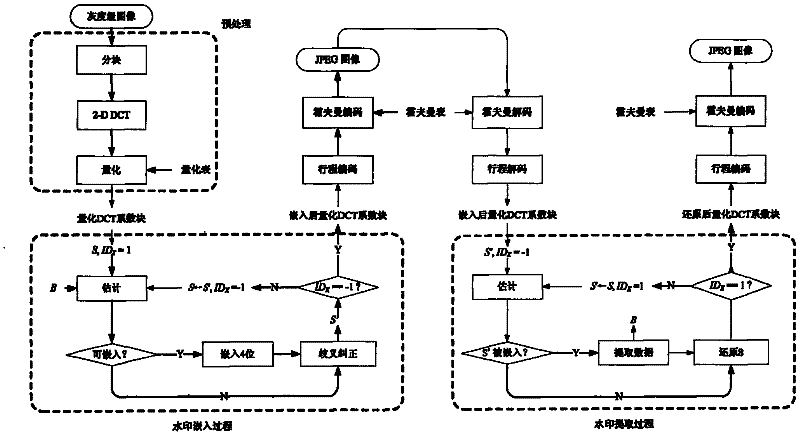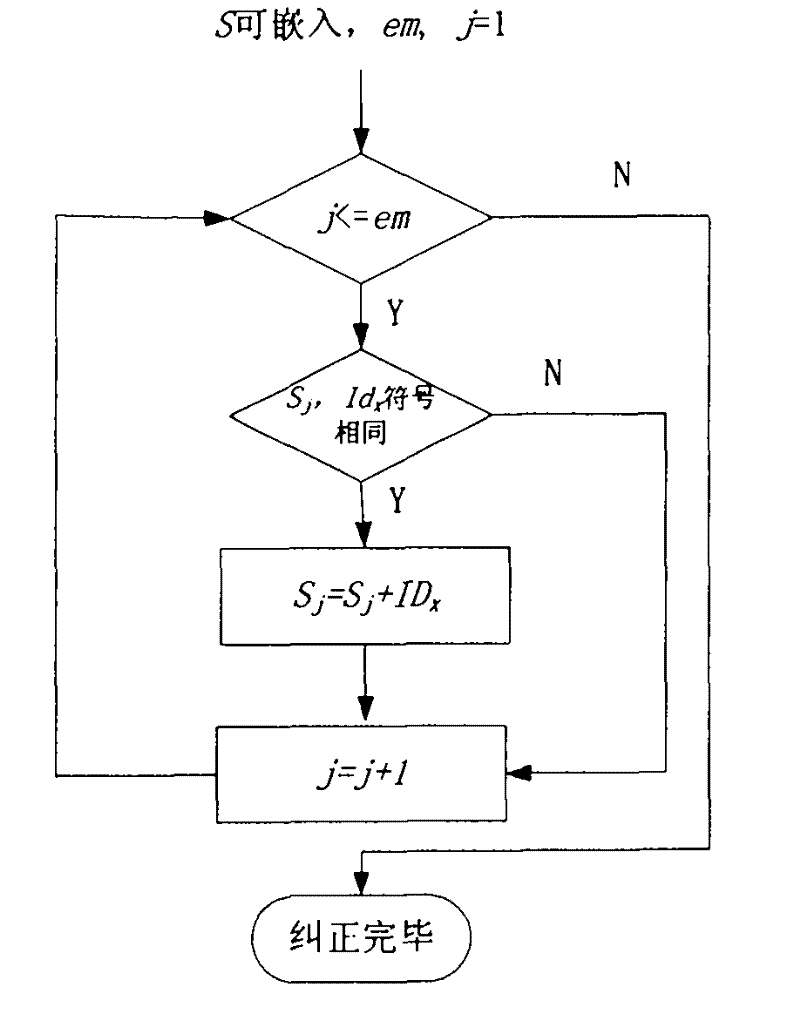Reversible image watermark method based on quantized DCT coefficient zero values index
An image watermarking and coefficient technology, applied in image communication, digital video signal modification, television and other directions, can solve the problems of image quality degradation, embedding capacity reduction, probability reduction, etc., to achieve the effect of suppressing distortion and
- Summary
- Abstract
- Description
- Claims
- Application Information
AI Technical Summary
Problems solved by technology
Method used
Image
Examples
Embodiment Construction
[0048] The overall frame diagram of the reversible image watermarking method based on quantized DCT coefficient zero-value index of the present invention is as follows figure 1 shown. The overall process includes two parts: the watermark embedding process and the watermark extraction process. Before the watermark is embedded, the original image is firstly preprocessed, including block division, DCT transformation and quantization, as shown in the upper left dotted box in the figure. In the watermark embedding process, the DCT coefficient block obtained by preprocessing is used to perform the watermark embedding operation in the lower left dashed box in the figure. After the watermark embedding is completed, each DCT block is losslessly compressed, that is, run-length coding and Huffman coding, and then a JPEG image is formed.
[0049] Before the watermark is extracted, the JPEG image is firstly decoded to obtain the DCT coefficient block, that is, Huffman decoding and run-le...
PUM
 Login to View More
Login to View More Abstract
Description
Claims
Application Information
 Login to View More
Login to View More - R&D
- Intellectual Property
- Life Sciences
- Materials
- Tech Scout
- Unparalleled Data Quality
- Higher Quality Content
- 60% Fewer Hallucinations
Browse by: Latest US Patents, China's latest patents, Technical Efficacy Thesaurus, Application Domain, Technology Topic, Popular Technical Reports.
© 2025 PatSnap. All rights reserved.Legal|Privacy policy|Modern Slavery Act Transparency Statement|Sitemap|About US| Contact US: help@patsnap.com



